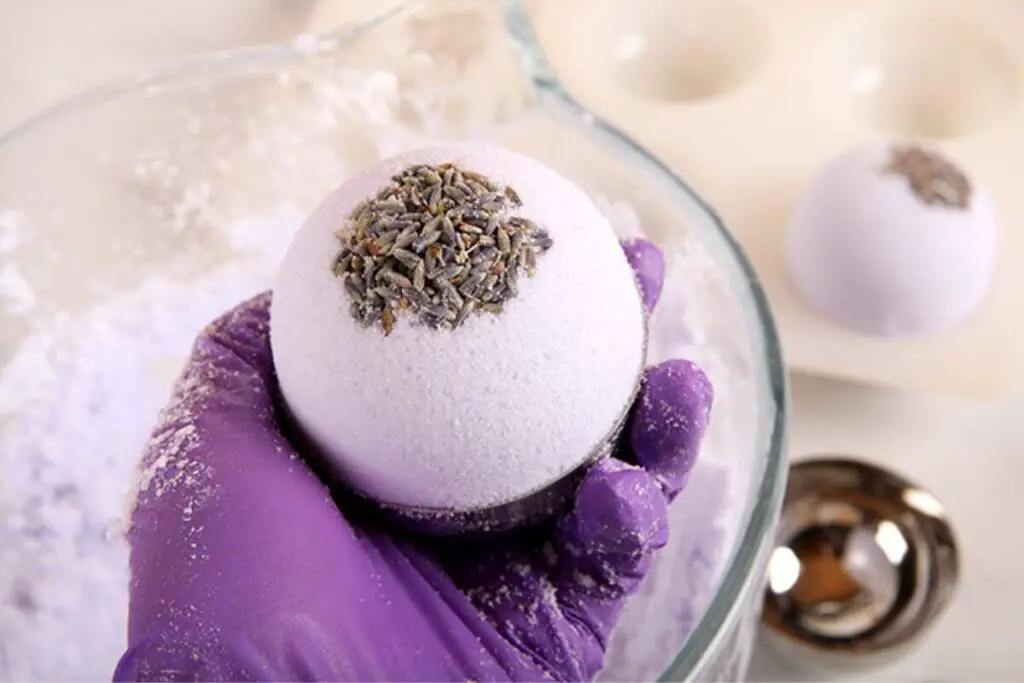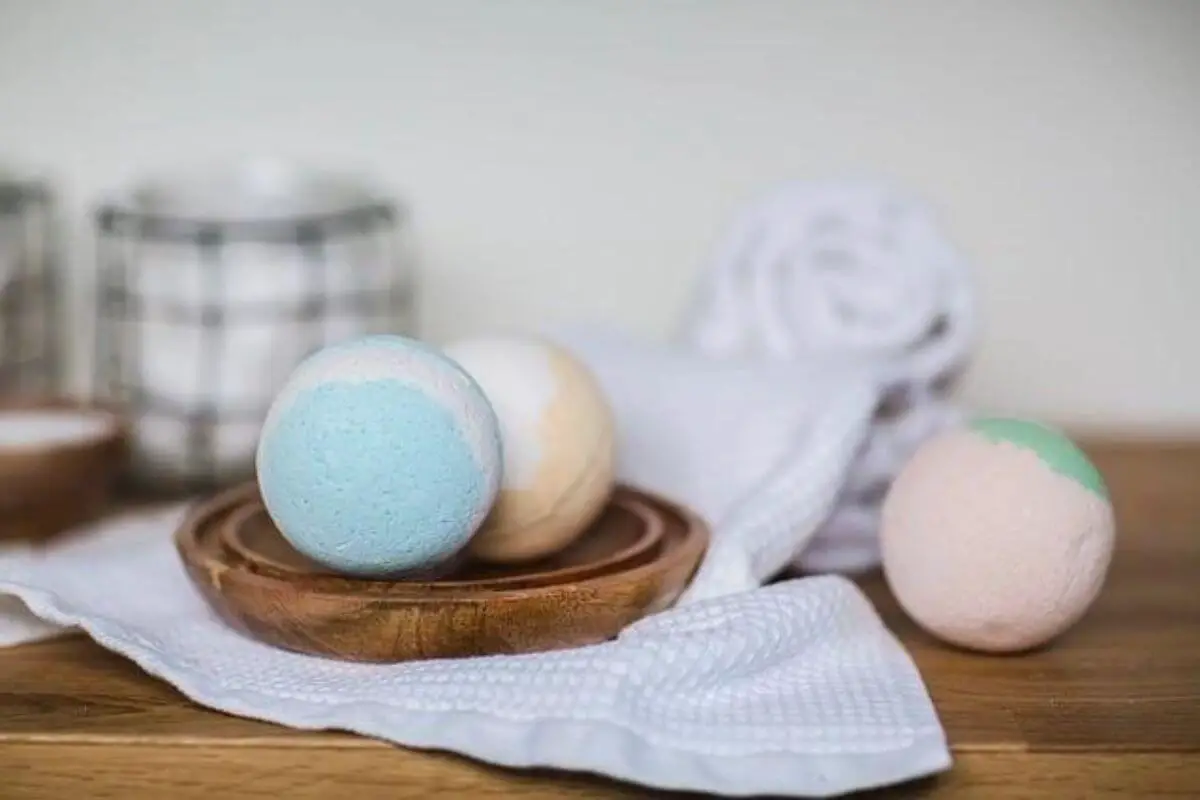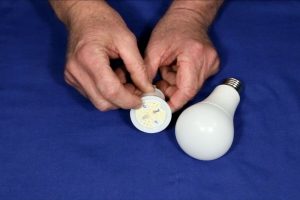Bath bombs have become a beloved addition to many self-care routines, transforming ordinary baths into colorful and aromatic experiences. These effervescent spheres, often composed of baking soda, citric acid, essential oils, and vibrant colors, bring relaxation and luxury to bath time. However, like many beauty and self-care products, bath bombs also have a shelf life, and understanding their longevity and how to store them properly is crucial.
The Shelf Life of Bath Bombs
Bath bombs do have a shelf life, and it largely depends on the ingredients used and how they are stored. Here’s what you need to know:

1. Ingredients Matter:
The shelf life of a bath bomb is influenced by the quality and freshness of its ingredients. Bath bombs that contain natural and organic components, such as essential oils and botanicals, may have a shorter shelf life compared to those made with synthetic ingredients.
2. Fragrance and Color:
Fragrance and color can fade over time, and bath bombs may lose some of their vibrant hues and scents as they age. However, this doesn’t necessarily mean they have gone “bad” in the same way that food spoils.
3. Preservatives:
Some bath bombs may contain preservatives to extend their shelf life. These preservatives can help prevent the growth of bacteria and mold, but they are not present in all products.
4. Moisture:
Bath bombs are sensitive to moisture and humidity. When exposed to moisture, they can become activated and start fizzing prematurely, which reduces their shelf life.
5. Storage Conditions:
Proper storage is vital to extending the shelf life of bath bombs. They should be kept in a cool, dry place away from direct sunlight and humidity. Airtight containers or resealable bags can help protect them from moisture.
In general, bath bombs can last anywhere from six months to two years, but it’s essential to pay attention to their appearance, scent, and performance to determine if they are still suitable for use.
Signs that Bath Bombs Have Gone Bad
While bath bombs may not “go bad” in the same way perishable foods do, they can deteriorate over time. Here are some signs that a bath bomb may no longer be at its best:
1. Fading Color:
If the vibrant colors have significantly faded, it may indicate that the bath bomb is past its prime.
2. Altered Scent:
A bath bomb that has lost most or all of its original fragrance may not provide the aromatic experience you desire.
3. Texture Changes:
Changes in texture, such as becoming crumbly or excessively soft, can indicate that a bath bomb has aged.
4. Reduced Fizz:
If the bath bomb no longer fizzes as vigorously as it once did, it may not create the effervescent bath experience you expect.
5. Unpleasant Odor:
An off-putting or rancid odor suggests that the bath bomb has likely gone bad and should be discarded.
Tips for Extending the Shelf Life
To maximize the shelf life of your bath bombs, consider the following tips:
- Store them in a cool, dry place.
- Keep them away from moisture and humidity.
- Use airtight containers or resealable bags.
- Avoid exposing them to direct sunlight.
- Rotate your bath bomb collection to use older ones first.
In conclusion, bath bombs have a shelf life, but they don’t “go bad” in the same way that food does. Pay attention to signs of deterioration, such as fading colors, altered scents, texture changes, and reduced fizz, to determine if a bath bomb is past its prime. Proper storage and ingredient quality can also play a significant role in extending their shelf life, ensuring you can continue to enjoy the relaxing and aromatic bath experiences they offer.
Repurposing Old Bath Bombs
If you find that some of your bath bombs have lost their initial vibrancy or scent but are still structurally intact, you don’t necessarily have to discard them. There are creative ways to repurpose old bath bombs, making the most out of your investment:
1. Foot Soak:
Crush a faded bath bomb into a basin of warm water and use it for a luxurious foot soak. The moisturizing and aromatic properties can provide relaxation and hydration to tired feet.
2. Shower Steamers:
Break an old bath bomb into smaller pieces and place them on the floor of your shower. As the water splashes over them, the aromatic steam can create a spa-like atmosphere.
3. DIY Bath Salts:
Grind old bath bombs into a fine powder and mix them with Epsom salts to create custom bath salts with a hint of your favorite fragrance.
4. Scented Drawer Sachets:
Place small portions of crumbled bath bombs in small fabric sachets or pouches and use them as scented drawer or closet sachets.
5. Aromatherapy:
Crush a bath bomb and sprinkle it into a warm bath for a diluted but still aromatic bath experience.
6. Gift Decorations:
Faded bath bombs can be used as decorative elements in gift packaging, adding a colorful touch to your presents.
Conclusion
Bath bombs, with their vibrant colors and enchanting scents, can enhance your bathing experience and provide relaxation. While they do have a shelf life and may lose some of their qualities over time, they don’t “go bad” in the traditional sense. By paying attention to signs of deterioration and employing proper storage practices, you can extend the life of your bath bombs.
Even if your bath bombs have lost some of their original charm, consider repurposing them in creative ways to continue enjoying their benefits and fragrances. This not only reduces waste but also allows you to make the most of your investment and add a touch of luxury to various aspects of your daily life.
FAQS
Certainly, here are some frequently asked questions (FAQs) about bath bombs and their shelf life:
Do bath bombs expire or go bad?
Bath bombs don’t typically expire or go bad in the same way that food does. However, they can deteriorate over time, losing some of their qualities like color and scent.
How long do bath bombs last?
The shelf life of a bath bomb can vary from six months to two years, depending on the ingredients used and how they are stored. Proper storage and quality of ingredients play a significant role in their longevity.
How can I tell if a bath bomb has gone bad?
Signs that a bath bomb may be past its prime include fading color, an altered scent, changes in texture, reduced fizz, or an unpleasant odor. If you notice these signs, it may be time to replace or repurpose the bath bomb.
Can I use a bath bomb after its scent has faded?
Bath bombs can still be used after their scent has faded, but they won’t provide the same aromatic experience. The other qualities, such as fizz and moisturizing properties, may still be intact.
What’s the best way to store bath bombs to extend their shelf life?
To maximize the shelf life of bath bombs, store them in a cool, dry place away from moisture, humidity, and direct sunlight. Airtight containers or resealable bags can help protect them from moisture.
Can I still use a bath bomb that has crumbled?
If a bath bomb has crumbled but is otherwise structurally intact, it can still be used for foot soaks, shower steamers, DIY bath salts, or as scented drawer sachets.
Are there any risks to using old bath bombs?
Using old bath bombs that have deteriorated doesn’t pose significant health risks. However, they may not provide the same experience as fresh bath bombs.
Can you make your own bath bombs to control their shelf life?
Yes, making your own bath bombs allows you to control the quality and freshness of the ingredients. You can also customize fragrances and colors to your liking.
Are there preservatives in bath bombs to extend their shelf life?
Some bath bombs may contain preservatives to help extend their shelf life by preventing the growth of bacteria and mold. Not all bath bombs include preservatives, so ingredient labels should be checked.
Can bath bombs be repurposed if they’ve gone bad?
Yes, old bath bombs that have lost their initial qualities can be repurposed for foot soaks, shower steamers, DIY bath salts, scented sachets, and more, allowing you to continue enjoying their benefits.



